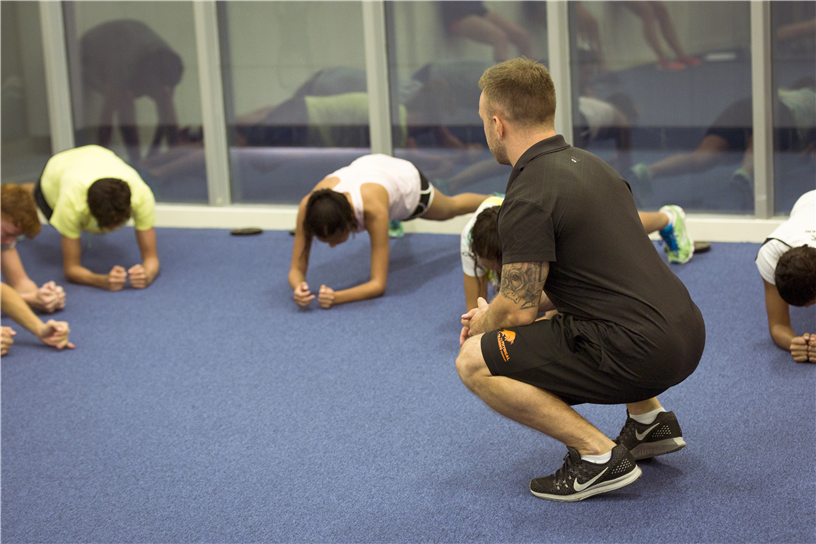Kris Greene is our guest writer to bring you part one of this look at strength and conditioning. Kris has worked in professional sport for many years. He now runs The Physical Training Company and specialises in Strength & Conditioning for youth athletes. He is also completing his MSc in sports nutrition.
There are 3 things we need to consider when starting our journey of strength and conditioning
Firstly, Physical Literacy
Body intelligence and physical awareness are the foundations of any professional athlete. The ability to pick up skills and learn new movements relies on the relationship between the brain and muscles within our bodies. The better these two speak to each other, the better chance we have of perfecting skills, adapting to training and excelling at our chosen sport.
This happens naturally as we grow and develop, but we can also maximise our potential by starting early and taking advantage of certain ‘windows of opportunity’. Some of us pick up skills naturally, others are more physically developed naturally, some may need that extra guidance whilst others excel from a solid foundation.
The best way to develop these pathways between the brain and muscle (whilst also avoiding
common use injuries and boredom) is to do a wide range of activities, skills and movements. The more general a training/development/sport schedule the better. Only in later years (maybe gymnastics aside), ~15 and upwards, would specialisation in a certain sport be recommended. There is such a broad spectrum for development and so much crossover from a wide range of activities that they will only stand to benefit young athletes when it comes time to choose a specific sport.
For example, swimming and gymnastics from a young age could set the tone for years to come as kids progress on to sports ranging from athletics to weightlifting and football to basketball. In this example, participation in these sports from an early age could provide the fundamental skills, coordination and physical foundations to then develop all round strength/cardio and agility/speed/skills in team sports such as football and basketball.

Secondly, Injury Prevention
The ability to resist injury is essential for any athlete throughout their career. Of course, there will always be the ones that couldn’t have been avoided (awkward tackle in rugby), BUT, there is potential to avoid the minor ones with the correct training program.
Broken bones and hard collisions are hard to predict and avoid at times. However, we can assume certain requirements for different sports, we can then train the joints and the surrounding soft tissue to withstand the demands (side stepping, twisting) of the sport in questions. We can also prepare the commonly used muscles to withstand forces placed upon them by the sport (sprinting, jumping) to avoid overuse or tearing.
Considering the analogy of a rally car and drag car – each car needs to be designed and prepared for the specific event to avoid disaster. Imagine a drag racing car trying to navigate a rally course at top speeds.
The idea is that S&C is a support system for the sport in question. You as an athlete are no good to yourself, your teammates or your coach if you’re injured. Sports person first, gym rat last.

Lastly, Improved Performance
Once the above two criteria have been satisfied then we can look to improve performance (it can be a simultaneous approach, don’t worry). Just like ‘injury prevention’, we need to consider the demands of the sports. Once we know this we can adopt ‘sport specific’ training methods to design a program aimed at improving physical attributes like strength, speed, power, agility and endurance.
Each sport places different demands on the body, and each exercise can challenge us differently. It is important to remember that when training to improve performance, it does not always mean training incredibly hard and pushing the limits. Sometimes less is more. Yes, it is important to work hard when required, but it is also very important not to take away from the sport itself.
When entering a gym/track, technique should be of utmost importance. If somebody gets injured in the gym, something has gone seriously wrong and we have overstepped the limits. Why do 4 million reps for time with bad technique, when all we may need to do is 10 reps X 3 sets to achieve the stimulus we need? Train smart, not stupid.

Conclusion
Always remember why you’re doing strength & conditioning. Build a solid foundation first before boarding the Gainz Train. Learn and ask questions along the way. ALWAYS focus on technique. Be patient. Enjoy it.
For any questions or queries on strength & conditioning for Youth Populations or to hear about our After-School Programs please contact:
www.thephysicaltrainingcompany.ae | 056 879 3270 | info@thephysicaltrainingcompany.ae
Kris.g@thephysicaltrainingcompany.ae | Roan.k@thephysicaltrainingcompany.ae
Instagram: krisgreene_ptc | roankotze_sc_ptc | thephysicaltrainingcompany
Facebook: Kris Greene PTC | The Physical Training Company

